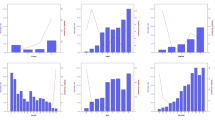Abstract
Background
Historically, the prognosis for poor grade subarachnoid hemorrhage patients has been considered dismal. As a result, many hospitals have chosen conservative management over aggressive therapy. This guarded approach, however, is based on studies that do not take into account newer, more effective, management protocols and more recent long-term evidence that significant neurological recovery occurs in the months to years following discharge. More accurate and predictive methods are needed to decide when aggressive therapy is warranted.
Methods
Two hundred and twenty-six grade aneurysmal subarachnoid hemorrhage (aSAH) patients of grades IV and V were admitted to Columbia University Medical Center and enrolled in our study. Demographics, clinical information (e.g. pupillary reactivity on admission), and treatment course (operative versus non-operative) were recorded. Rankin scores at 14 days, 3 months, and 1 year were also recorded. A favorable Rankin score was defined as 0–3. Unfavorable was defined as 4–6.
Results
Among all poor grade patients who received operative therapy, pupillary reactivity at admission was not predictive of a favorable Rankin score at day 14 (odds ratio = 3.3, P = 0.129). Pupillary reactivity, however, was predictive of Rankin score at 3 months (odds ratio = 4.57, P = 0.05) and 12 months (odds ratio = 6.44, P = 0.008). After constructing a Kaplan–Meiers survival curve, pupillary reactivity was a better predictor of survival at 12 months than H&H grade [Hazard ratio 3.342 (1.596–7.000) P = 0.001 versus 1.964 (1.016–3.798) P = 0.045].
Conclusions
This study demonstrates that significant recovery occurs in the weeks to months after poor grade aSAH. Pupillary reactivity on admission can be used as a predictor of survival and recovery at intermediate and long-term time points, more so than Hunt and Hess grade.



Similar content being viewed by others
References
Mocco J, Ransom ER, Komotar RJ, Schmidt JM, Sciacca RR, Mayer SA, Connolly ES Jr. Preoperative prediction of long-term outcome in poor-grade aneurysmal subarachnoid hemorrhage. Neurosurgery 2006;59:529–38; discussion 529–38.
Mocco J, Ransom ER, Komotar RJ, Sergot PB, Ostapkovich N, Schmidt JM, Kreiter KT, Mayer SA, Connolly ES Jr. Long-term domain-specific improvement following poor grade aneurysmal subarachnoid hemorrhage. J Neurol 2006;253:1278–84.
Cesarini KG, Hardemark HG, Persson L. Improved survival after aneurysmal subarachnoid hemorrhage: review of case management during a 12-year period. J Neurosurg 1999;90:664–72.
Naidech AM, Janjua N, Kreiter KT, Ostapkovich ND, Fitzsimmons BF, Parra A, Commichau C, Connolly ES, Mayer SA. Predictors and impact of aneurysm rebleeding after subarachnoid hemorrhage. Arch Neurol 2005;62:410–6.
Claassen J, Carhuapoma JR, Kreiter KT, Du EY, Connolly ES, Mayer SA. Global cerebral edema after subarachnoid hemorrhage: frequency, predictors, and impact on outcome. Stroke 2002;33:1225–32.
Heuer GG, Smith MJ, Elliott JP, Winn HR, LeRoux PD. Relationship between intracranial pressure and other clinical variables in patients with aneurysmal subarachnoid hemorrhage. J Neurosurg 2004;101:408–16.
Ogilvy CS, Cheung AC, Mitha AP, Hoh BL, Carter BS. Outcomes for surgical and endovascular management of intracranial aneurysms using a comprehensive grading system. Neurosurgery 2006;59:1037–42; discussion 1043.
LeRoux PD, Elliott JP, Grady MS, Newell DW, Mayberg MR, Winn HR. Anterior circulation aneurysms: improvement in outcome in good-grade patients 1983–1993. Clin Neurosurg 1994;41:325–33.
Hutter BO, Kreitschmann-Andermahr I, Mayfrank L, Rohde V, Spetzger U, Gilsbach JM. Functional outcome after aneurysmal subarachnoid hemorrhage. Acta Neurochir Suppl 1999;72:157–74.
Salary M, Quigley MR, Wilberger JE Jr. Relation among aneurysm size, amount of subarachnoid blood, and clinical outcome. J Neurosurg 2007;107:13–7.
Chiang VL, Claus EB, Awad IA. Toward more rational prediction of outcome in patients with high-grade subarachnoid hemorrhage. Neurosurgery 2000;46:28–35; discussion 35–6.
O’Sullivan MG, Dorward N, Whittle IR, Steers AJ, Miller JD. Management and long-term outcome following subarachnoid haemorrhage and intracranial aneurysm surgery in elderly patients: an audit of 199 consecutive cases. Br J Neurosurg 1994;8:23–30.
Kremer C, Groden C, Lammers G, Weineck G, Zeumer H, Hansen HC. Outcome after endovascular therapy of ruptured intracranial aneurysms: morbidity and impact of rebleeding. Neuroradiology 2002;44:942–5.
Kremer C, Groden C, Hansen HC, Grzyska U, Zeumer H. Outcome after endovascular treatment of Hunt and Hess grade IV or V aneurysms: comparison of anterior versus posterior circulation. Stroke 1999;30:2617–22.
Adams HP Jr, Kassell NF, Torner JC, Nibbelink DW, Sahs AL. Early management of aneurysmal subarachnoid hemorrhage. A report of the Cooperative Aneurysm Study. J Neurosurg 1981;54:141–5.
Broderick JP, Brott T, Tomsick T, Miller R, Huster G. Intracerebral hemorrhage more than twice as common as subarachnoid hemorrhage. J Neurosurg 1993;78:188–91.
Harrod CG, Bendok BR, Batjer HH. Prediction of cerebral vasospasm in patients presenting with aneurysmal subarachnoid hemorrhage: a review. Neurosurgery 2005;56:633–54; discussion 633–54.
Yoshimoto Y, Wakai S, Ochiai C, Nagai M. Significance of pupillary reactivity in poor-grade aneurysm patients as a prognostic factor and an indication for active treatment. Br J Neurosurg 1997;11:25–31.
Laidlaw JD, Siu KH. Poor-grade aneurysmal subarachnoid hemorrhage: outcome after treatment with urgent surgery. Neurosurgery 2003;53:1275–80; discussion 1280–2.
Author information
Authors and Affiliations
Corresponding author
Rights and permissions
About this article
Cite this article
Mack, W.J., Hickman, Z.L., Ducruet, A.F. et al. Pupillary Reactivity Upon Hospital Admission Predicts Long-term Outcome in Poor Grade Aneurysmal Subarachnoid Hemorrhage Patients. Neurocrit Care 8, 374–379 (2008). https://doi.org/10.1007/s12028-007-9031-1
Published:
Issue Date:
DOI: https://doi.org/10.1007/s12028-007-9031-1




